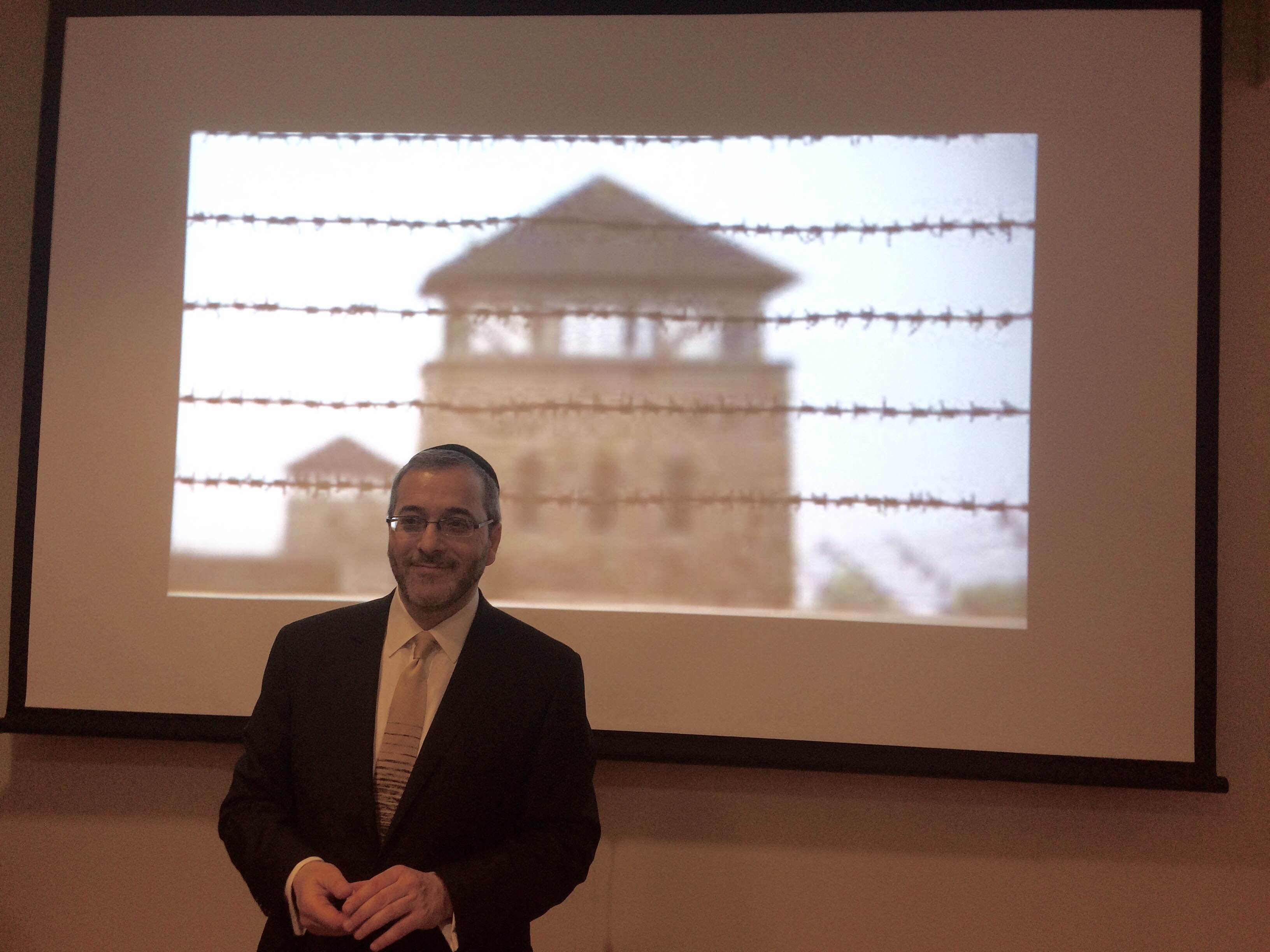Yom HaShoah, Remembered
In commemoration of Yom HaShoah, Mel Urbach, Esq. speaks about his work recovering Nazi-stolen artifacts for Holocaust victims.

On May 4, 2016, American attorney Mel Urbach, who devotes his legal practice to helping Holocaust victims recover artifacts stolen during the years of Nazi terror, presented the Yom HaShoah Presidential Lecture on “Recovering Nazi Looted Art: The Last Prisoners of the Shoah” at the Lander College for Men.
On May 4, 2016, American attorney Mel Urbach, who devotes his legal practice to helping Holocaust victims recover artifacts stolen during the years of Nazi terror, presented the Yom HaShoah Presidential Lecture on “Recovering Nazi Looted Art: The Last Prisoners of the Shoah” at the Lander College for Men.
There was a “massive, massive drive” by the Nazis to take away everything the Jews owned, explained Mr. Urbach, who has actively participated in recovering several billion dollars for World War II victims during the last two decades. “If we can find an artifact, a piece of porcelain, a menorah that has someone’s name on it—a third of all items have been engraved—and go through a process called Provenance to trace the chronology of the custody of these objects, then, through careful research, we’re able to open up these cases and see if we can return them to their rightful owners.”
As one example: Since 2008, Mr. Urbach has been attempting to return the Guelph treasure --- a collection of art worth $275 million today that now hangs at a Prussian museum --- to its rightful owners—the heir of Saemy Rosenberg, the Jewish-Austrian art dealer to whom it rightfully belonged before it was forcefully sold to Hitler’s Hermann Goering.
The lecture—which was sponsored by the Office of the President—was unique in that it addressed an aspect of the Holocaust that “brings a degree of contentment on Yom HaShoah,” said Urbach.
“Looted art, and recovery of property, particularly Judaica, is one of the few things you can talk about that can bring some satisfaction, some degree of happiness, to an audience. Just the fact that we can reach back in history and find a sefer, a manuscript, a menorah, a piece of art or porcelain or furniture—and we can bring this back to the family—brings serenity to the family, and the Jewish community at large. Many of our victims were murdered, or chased out of the Holocaust penniless. Now, their families can actually put their arms around something, and actually feel something tangible that connected them to their ancestors, and that belonged to them.”
As one of the few lawyers from the frum community involved in this type of work, Urbach remembers the first time he realized he might want to enter this line of work.
“I never knew why I had four names until I went to Yad Vashem when I was seven with my father. At the end of the hall, we entered the Hall of Remembrances, and my father started writing down all these names… they were my own names! I asked him why he was doing that, and he said, “These are the names of my brothers, who I lost in the war…”
“That was a turning point for me. Whenever we have a happy occasion in my family, I can’t help but think that this almost couldn’t have happened had my father, ch”v, also been killed in the war, along with his brothers. Unfortunately, my father isn’t alive today, but my work now is a continuation of the struggle. I’m representing the six million who can’t speak. And I’m relating events they witnessed and want they want you to know: that there are objects out there, and there are many, and they’re languishing in the museums and libraries all over Europe. It is time to find them and bring them home. This is my job”
Mr. Urbach, who graduated from the Jacob D. Fuchsberg Law Center, says Touro “is part of my life.”
“It brings me a great deal of satisfaction to know that I’ve used the education I received at Touro to challenge German companies, museums and libraries to try and win back my clients’ stolen and looted belongings.”
The lecture and accompanying Q & A was a standing-room-only crowd for students and community members.
“I thought Mr. Urbach was excellent,” said kollel member Shai Kopitnikoff, LCM ’13. “I’m happy that Touro had a program…it really enhanced my Yom HaShoah.”
Freshman David Borochov, a native of Vienna, said he appreciated the lecture as it brought back memories of travelling to Belvedere Palace and seeing many hidden, undisclosed paintings and artifacts stolen from Jewish families—for example, the highly-publicized Portrait of Adele Bloch-Bauer I – also known as the Woman in Gold. “Mr. Urbach is doing amazing work,” he said.

